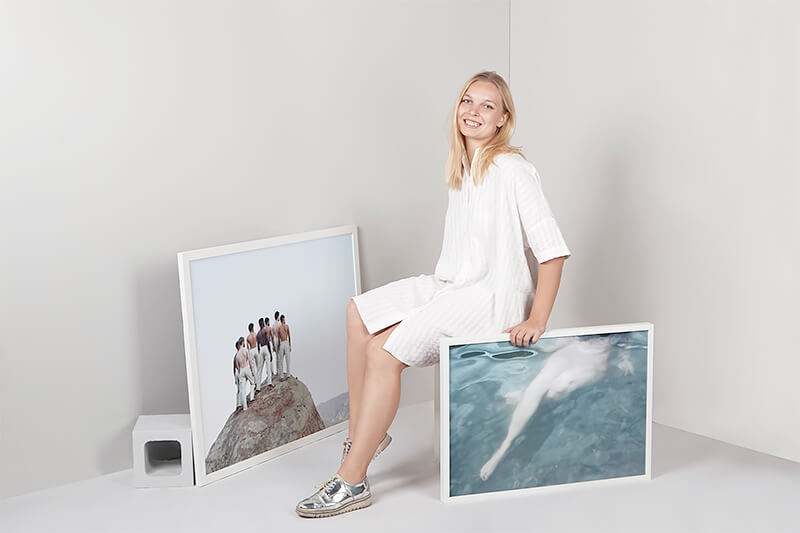Lotta Lemetti is a photographer with a unique vision that embraces the beauty of the simple and mundane. Her minimal aesthetic carries through the diverse work she loves to make and she's not afraid to use alternative processes, mixed media and graphic design in her image making.
The native of Finland obtained her Bachelor of Fine Arts in Photography from the NewYork Film Academy, and was also the recipient of the highly prestigious Fulbright undergraduate award in 2015, one of only 3 Finnish winners that year and the only grantee in the field of arts. Her work has since been exhibited in galleries around the world, including New York, Los Angeles, Italy, and Finland.
Lotta is constantly sought after by leading artists in her field, and has worked alongside many, including award-winning photographer and visual artist Amanda Rowan, named Chromatic Photographer of the Year 2018 for her achievements in color photography and Photo District News' The Curator Fine Art competition in Still Life in 2019, whose work has been exhibited in Photo LA, and Paris Photo as well as the Wall Street Gallery and the Leica Gallery in Los Angeles, and on display at the Palms with Damien Hirst, Jean-Michel Basquiat, Andy Warhol, and Takashi Murakami, and Photographer/Visual Artist Naomi White, winner of Photo District News' Objects of Desire award and has exhibited throughout North America and Europe, including with Tobey Fine Arts, Christopher Henry Gallery and the Lower Manhattan Cultural Council in New York.
In 2018, Lemetti's latest photography series Kekta won the title of Latitude Life APS Photographer of the Year. Kekta was then exhibited in New York and the city of Pravisdomini, Italy. Ms. Lemetti's work has been featured in FAYN Magazine, U+I Magazine, NewBeauty Magazine, PhotoVogue and FLOAT Magazine.
Kekta is an exploration of cultural blending and national identity. These photographs originate from her own experience of living between two cultures. She created scenes that are inspired by the immemorial beliefs of unity between humans and nature, and cultural traditions that have been passed on for generations in the form of oral folk tales about Finnish mythology. The stories are hand picked from the Finnish national epic Kalevala, which is a book of poems collected from different regions of Finland and then stitched together into one cohesive story.
I took these individual stories and photographed them in a variety of American landscapes, with people from different ethnic backgrounds, creating a new narrative of polycultural identity.
Today, we live in a global age, which means that we must reconsider the old ways of thinking about national identity. People are no longer bound by the geographical borders of countries and only a few places on earth can be said to remain monocultural. Bigger metropolis cities are starting to resemble a ‘human mosaic' in which we are moving from multiculturalism, which emphasises the coexistence of different individual cultures to polyculturalism, which indicates the integratedness of the cultures.
